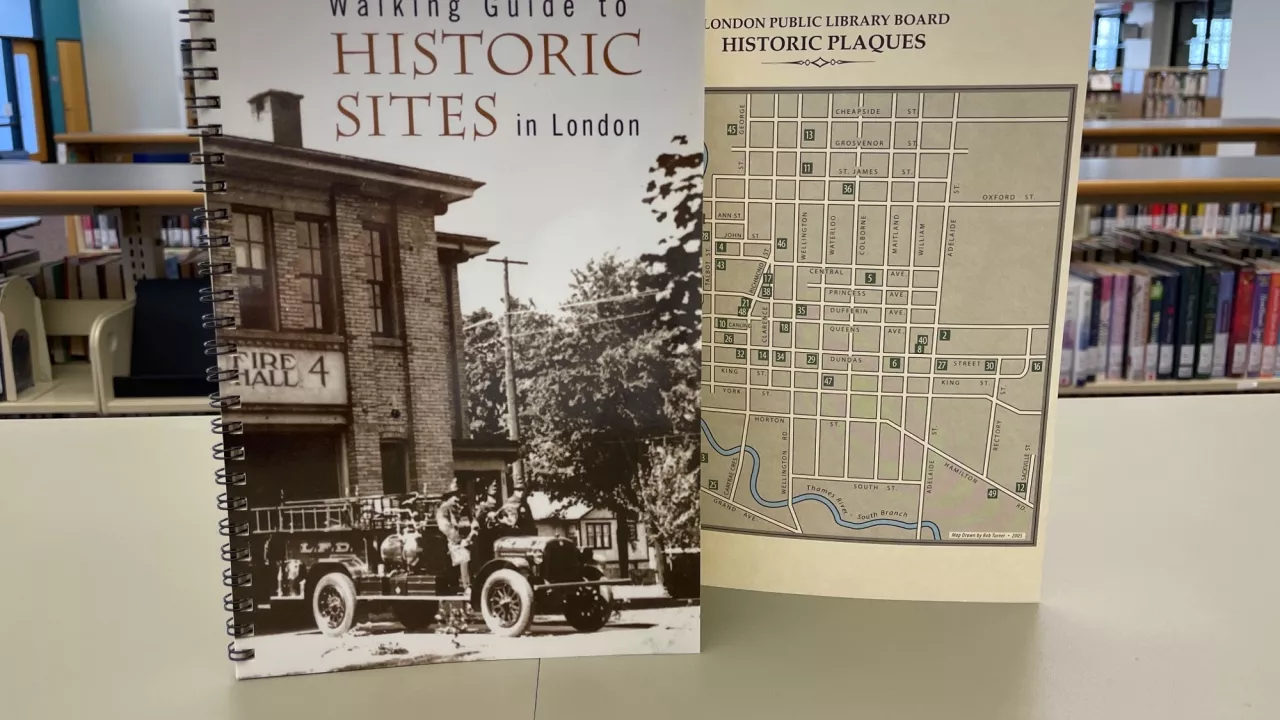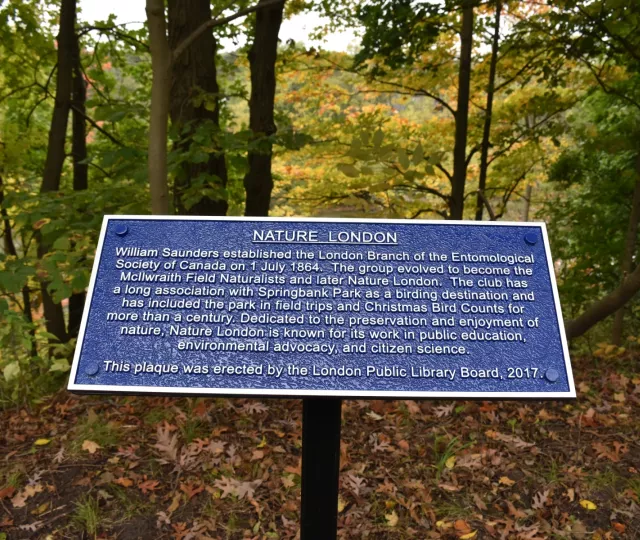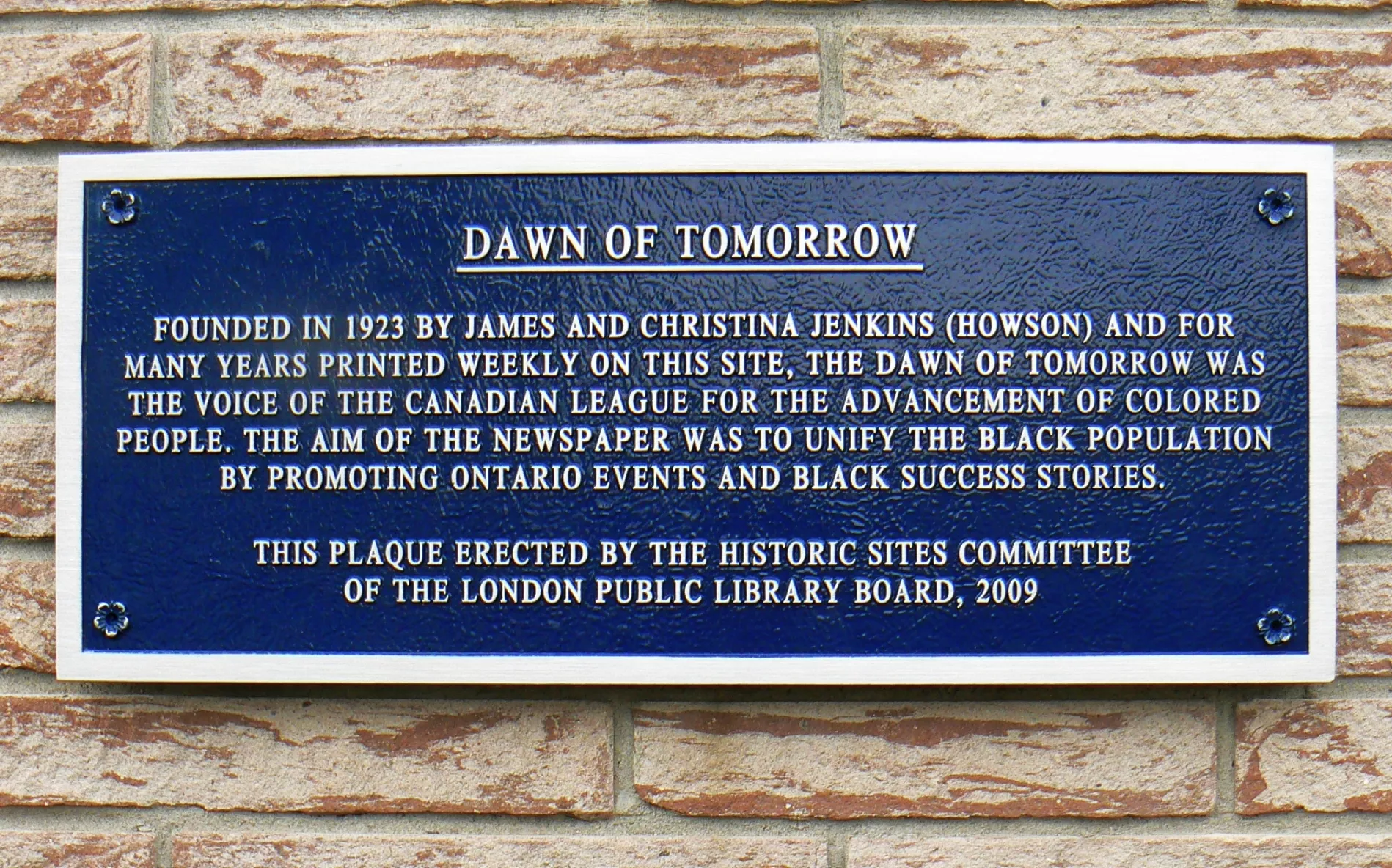The Historic Sites Committee has recognized more than 75 sites in London with a plaque and a body of research in the London Room at Central Library. Find a list of sites at the bottom of this page. It can take several months after a plaque has been erected before the history of the site is added to this website.
About the Historic Sites Committee
Since 1970, the Historic Sites Committee has erected plaques commemorating buildings and sites of historical and architectural merit in London. The purpose of the plaques is to inform Londoners and visitors about the city's history, to interest Londoners in the preservation and appreciation of their heritage and to maintain an easily accessible archive of research materials in the Ivey Family London Room at London Public Library's Central Library. The plaques erected by the Historic Sites Committee are for information purposes only and do not indicate heritage designation.
Members of the Historic Sites Committee are volunteers who have an expertise or interest in local history and are appointed by the London Public Library Board. Funding for the work of the Historic Sites Committee is raised through grants, community contributions and donations. The Historic Sites Committee welcomes suggestions for plaques from members of the community and provides their Historic Sites Committee Guidelines as a helpful starting point.
For additional information and if you have a suggestion for a site for the Committee to research, please email Historic.Sites@lpl.ca
New Plaque Unveiled!
The Historic Sites Committee unveiled its 76th and 77th plaque in 2023 recognizing Clark House and the London Muslim Mosque respectively.
The new Clark House plaque faces Clarke Road at 1903 Avalon Street. The City of London also unveiled a heritage designation plaque on the house simultaneously. Here is the text for the Historic Sites Committee plaque:
John Clark House Built c1857, this brick homestead housed multiple generations of the Clark family, successful farmers who turned parts of the Upper Canadian wilderness into prosperous mixed farms. John Clark (1777-1873), a pioneer from Ireland, purchased 100 acres at this location from the Canada Company in 1829 and this house remained in the family until 1912. The Clark family made many significant contributions to the township and city of London, and the area became known as Clark's Corners and Sideroad.
The 77th plaque exists on the exterior of the London Muslim Mosque at 151 Oxford St. W. Here is the plaque text:
London Muslim Mosque And of His signs is the creation of the heavens and earth and the diversity of your languages and your colours. Indeed, in that are signs for those of knowledge. [Quran 30:22] Ontario’s first Mosque was established in a house at 151 Oxford Street West by the Canadian Moslem Benevolent Society of London in 1957. Following a fire, the present Mosque opened in 1964 and the Islamic School in 1996. London’s first Muslims arrived in the late 19th century. Now the Mosque serves Muslims of all nationalities.
A more detailed history will be added to the website in the next few months and related research materials will be available in the London Room.
Local Historic Sites Marked by the Commitee
Here you will find short histories of the London sites marked by the Historic Sites Committee since 1970. The Historic Sites Committee has recognized 75 London sites with a plaque.
It can take several months after a plaque has been erected before the history of the site is added to this website.
Where buildings have been subsequently demolished, the plaques have been re-mounted in the Ivey Family London Room at the Central Library. As well, a few plaques are missing from their sites, and the Committee is working to replace them.
These brief histories are based on speeches given at plaque unveilings, and on research materials collected about each historic site. These materials are available in the Ivey Family London Room -- an excellent place to discover sources for the study of local history.
There are also many other London sites that have been marked by various designated heritage bodies. Sites listed here are limited to those recognized by the Historic Sites Committee of the London Public Library Board.
For additional information and if you have a suggestion for a site for the Committee to research,, please email Historic.Sites@lpl.ca
Historic Sites Committee Plaques
Click on a link to learn more about the Historic Site.

Walking Guide to Historic Sites in London
In 2006, the Historic Sites Committee published their Walking Guide to Historic Sites in London. This guide provides brief histories of the 49 sites marked by the Committee from 1970 through 2000. Print copies of the Walking Guide to Historic Sites in London can be borrowed from many library branches.
The first draft of the Walking Guide was compiled by Eric P. Sheppard while a student in the Public History Master of Arts Program, Department of History, Western University. We acknowledge his hard work, and thank his supervisors, Professors Benjamin Forster and Jan Trimble, and his editorial assistant, David Larlee. The staffs of the Western University Archives, and of the Ivey Family London Room, assisted with research and historical photographs. Rob Turner of the D.B. Weldon Library, Western University, designed the map. Netta Brandon, Glen Curnoe, Vince Gray, Elizabeth Hill, Anita McCallum, Catherine B. McEwen, Bill McGrath, and Elizabeth Russell likewise gave invaluable assistance.
The final manuscript was edited by members of the Historic Sites Committee. This has been a collaborative effort and the Committee welcomes notice of any errors. Funding for this project was provided by Landmarks London - Heritage and Museum Network. Publication of the Guide fits with the mission of Landmarks London to establish the City of London as a well-known and highly valued destination for cultural and heritage tourism.
Since the original manuscript was prepared, the Committee has erected additional plaques. The histories of those sites are included within this online version.


